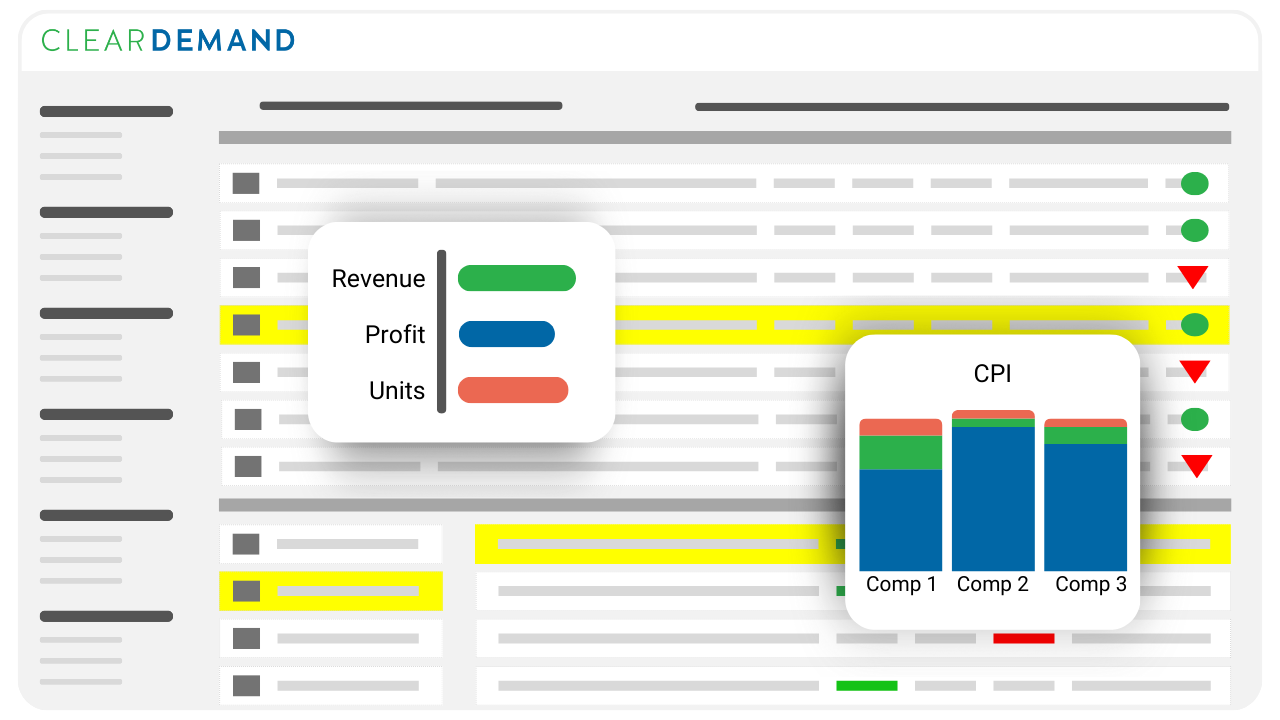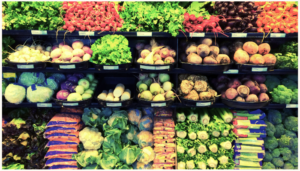Secure a Competitive Edge With AI-Driven Price Management and Optimization
Reading Time: 7 Minutes
Is your grocery pricing strategy keeping up?
Traditional methods like manual processes and spreadsheets are no longer effective.
To compete and win, grocers need state-of-the-art, automated pricing solutions that deliver accurate, responsive, and localized pricing.
It’s time embrace innovation and unlock your full potential with data-driven pricing.
3 Limitations of Traditional Pricing Methods
Traditional pricing solutions often leave a lot to be desired. Relying solely on spreadsheets or outdated software can lead to…
- Time-consuming manual work: When grocery pricing teams manually update spreadsheets, it leads to errors, inefficiencies, and delayed responses to market changes. Don’t miss opportunities!
- Limited data analysis: Traditional price management tools lack the ability to process large volumes of data from multiple sources, such as TLOG/sales, competitor prices, promotional activity, vendor deals and assortment/space changes. This restricts your ability to make informed decisions.
- Inflexible pricing rules: Rule-based pricing capabilities tend to be limited and heuristic rather than comprehensive and rigorous. Rules are difficult to manage and unable to adapt to changing market conditions. As a result, it’s easy to fail to compete effectively and revenue and profit drivers.
These limitations prevent grocers from responding effectively to changing demand, competitor pricing moves, and changes in assortment/space. In this new era of retail, intelligent pricing solutions are required to stay competitive.

Read the full article in Progressive Grocer.
Key Considerations for Optimized Pricing
AI-powered pricing doesn’t just stop at analyzing historical sales or internal data.
One of its most powerful capabilities is allowing retailers to analyze pricing across the competitive landscape and adjusting their own prices accordingly. Yes – prices can remain competitive while you’re protecting margins, giving grocers the flexibility to act on competitor moves without sacrificing profitability.
Effective price management goes beyond simply reacting to competitors. Here are additional considerations to optimize your pricing strategy:
- Use AI to Identify Key Items Your Customers Care About: In the eyes of your shoppers, not all products are equal. AI can help you identify which items are the most price-sensitive, allowing you to prioritize the key products that drive loyalty and traffic. By focusing on these important items, retailers can make more impactful pricing decisions that align with customer preferences.
- Forecast Pricing and Promotion Impact: AI can forecast how different pricing and promotion strategies will impact revenue, profitability, and competitiveness before any decisions are made. This forward-looking approach ensures that you understand the full impact of pricing changes, allowing you to anticipate outcomes and adjust strategies accordingly. Let’s say a promotion is expected to increase demand significantly, AI can help ensure the retailer is prepared with the right inventory levels on the right days.
- “What-If” Analysis on Existing Pricing Rules: Many retailers operate with pre-existing pricing rules that govern how prices are set across the business. AI allows analysis of how these rules affect revenue and profitability. By understanding the effects of current pricing rules, retailers can make adjustments to remain compliant while still maximizing profit. This means more flexible and effective price management within established parameters.
- Maintain Size Parity and Private Label/National-Brand Price Relationships: One crucial consideration is the relationship between private label and national-brand pricing. AI helps maintain these price relationships by continuously analyzing the premium between national and private label brands. This ensures that private label products remain attractively priced compared with national brands, driving both customer interest and profitability. By understanding the optimal price premium, retailers can ensure that their private label offerings remain competitive while still protecting their margins.
With AI, retailers can optimize prices not just at a product level, but also across categories and locations, creating a more tailored and profitable pricing strategy.
The Latest Insights – Straight to Your Inbox
Sign up for the ClearDemand mailing list for actionable strategies, upcoming events, industry trends, and company news.













